A refugee said "I cannot go back to my country because of the following points: 1. Imprisonment and Persecution 2. Torture and punishment 3. Electric torture 4. Beating with the stick on the feet (corporal punishment) 5. threatening me to be killed 6. Lack of human rights organizations which can lobby against human rights violation in the country. 7. Threatening to abuse my family members. 8. Demolition of my house. Due to all that I can’t go back".
Home Page
-
توقيع اتفاق سلام بين اطراف النزاع في الزاوية - لقد وقعت اطراف النزاع في الزاوية صلحا بموجبة تقف الحرب وتنتهي وهذا بفضل الله .. لكن هناك قنبلة وضعت في برميل قمامة في الشارع امام المحلات وعندما ارادوا ا...
-
استنكار لقانون التشهير والقذف في ليبيا - *منظمة الراية لحقوق الانسان* *E mail : **arayahro@yahoo.ie* *Blog: arayaarabic.blogspot.com* *التاريخ/ 01/01/2014 * *رقم اشاري / 0001177* *إستنكار* *لق...
-
-
Jul 5, 2009
Scrap all nuclear weaponsby
Khor Eng Lee(July 5, 2009):
In 1986 US President Ronald Reagan and Soviet leader Mikhail Gorbachev claimed they had come very close to an agreement on total nuclear disarmament. And nearly two decades after the end of the Cold War. President Barack Obama has initiated another bold attempt to rid the world of nuclear weapons, calling them “the most dangerous legacy of the Cold War.” As these weapons of mass destruction pose the greatest threat to human survival, all nations must pitch in to globalise Obama’s campaign and to put it through – to make this world nuclear-free.
IT WAS US president Franklin Roosevelt (1933-45), who had made the fateful political decision and given his “OK” on Jan 19, 1942 to the nuclear scientists and engineers to go ahead with research and development to build the first atomic bombs.And his successor, Harry Truman (1945-1953), authorised the use of the two A-bombs to destroy the cities of Hiroshima and Nagasaki in Japan on August 1945 – the first and hitherto the only time that such weapons of mass destruction were ever used in a war between nations.When Obama renewed the long drawn out campaign for nuclear abolition which he announced before a huge crowd outside the Prague Castle gates in the Czech capital on April 5, he stressed that the US has a moral responsibility to take the lead as the only nation to have used a nuclear weapon. There is every chance Obama might bring up the matter of renewing the START treaty, which calls for cuts in nuclear weapons, when he meets Russian president Dmitry Medvedev today.Four years after WWII, the Soviet explosion of a fission bomb (Joe One) in September 1949 was to trigger a nuclear arms race between the US under Truman and the Soviet Union under Stalin (general secretary 1922-53).Under President Dwight D. Eisenhower (1953-61), the US military expanded its nuclear arsenal 20-fold (a stockpile of more then 24,000 nuclear weapons by the end of 1961). When he campaigned for Nixon in late October 1960, he told Americans that the US military had become “the most powerful on Earth ...”Eisenhower once said that every gun made is a theft from those who hunger. (The US will spend US$741 billion [RM2.6 trillion] on its military this year, nominally twice the American GNP of US$350 billion in 1960, accounting for nearly half of the global military expenditure, while as many as one billion people go hungry every day.)On nuclear disarmament, he said: “The alternative is so terrible that any risks there might be in advancing disarmament are as nothing.” But the words of this old and wise warrior went unheeded. Partly because, as they say, he didn’t walk the talk.By the time of the Cuban missile crisis on October 1962, the US had such a tremendous military nuclear superiority that Nikita Khrushchev (general secretary 1953-64) had vainly tried to erode American dominance by planting his SS-4 and SS-5 rockets on Cuban soil about 150km away from the shores of Florida. Each SS-4 carried a 3-megaton warhead. Only 30 years later did the US come to know that the Soviets had 162 warheads in Cuba.When President John F. Kennedy announced the crisis on Oct 22, 1962, he warned of full nuclear retaliation, called upon Chairman Khrushchev to remove all offensive weapons in Cuba, and urged a peaceful solution to the confrontation.Nuclear historian Richard Rhodes has noted that the US Strategic Air Command had put on board bombers nearly three thousand strategic nuclear weapons packing a gross 7,000 megatons (more than two tons a head for the world population of 3 billion in 1962). The SAC had also tried to provoke a Soviet alert by flying bombers towards Soviet targets, which would justify a devastating US first-strike.As Rhodes has put it, the first and only direct nuclear confrontation between the two superpowers was also very nearly the last. The two nuclear Goliaths had come close to the Apocalypse.Compelled to remove his missiles from Cuba, Khrushchev’s humiliation led to an unprecedented Soviet nuclear buildup which multiplied the number of its nuclear weapons by ten times within the next couple of decades. The Soviet Union reached nuclear parity with the US by 1978 and shortly afterwards the USSR overtook and outnuked the US numerically.When Reagan and Gorbachev met for the first time at Geneva in 1985 at the height of the Cold War, both leaders accused each other for “the mad arms race which had led the world to the brink of catastrophe” (to quote Gorbachev’s own words to describe a view fully shared by Reagan). In their joint communique, they declared that a nuclear war cannot be won and must never be fought. Both also pledged not to seek military superiority (in word, but not in deed).Gorbachev wrote in his memoirs: “We prepared a policy statement containing a step-by-step programme for moving towards a nuclear-free world ...”Reagan wrote: “No one could ‘win’ a nuclear war (what the great Danish physicist Niels Bohr had told Roosevelt and Churchill in 1944). Yet as long as nuclear weapons were in existence, there would always be risks they would be used, and once the first nuclear weapon was unleashed, who knew where it would end?“My dream, then became a world free of nuclear weapons ...”On their second meeting in Reykjavik, Iceland, October 1986, Reagan and Gorbachev said they had come very close to an agreement on dismantling and destroying their vast nuclear arsenals. They had discussed a 10-year plan (1986-96) to free the world from the threat of a nuclear Armageddon. But their dispute over Reagan’s pet project for a defence system against nuclear missiles (referred to as the SDI, Strategic Defence Initiative) torpedoed their plan for total nuclear disarmament.Donald Regan, chief of staff, sat next to Reagan in the limousine taking them back to the US Embassy. Regan has written in his memoir that Reagan said to him: “Don, we came so close. It’s just a shame.”“He placed his thumb and forefinger less than a half inch apart and added, ‘We were that close to an agreement.’ ”Gorbachev wrote: “Success was a mere step away, but SDI proved an insurmountable stumbling block ...”The SDI proved to be insurmountable to both leaders because while one of them was obsessed with it, the other was possessed by a fear of it.Moreover, they didn’t have their top priority right. SDI or nuclear disarmament?Both Reagan and Gorbachev were “just one step away” from going down in history as mankind’s greatest peacemakers.As with the original decision to go nuclear (made by Roosevelt and Stalin in the 1940s), the momentous decision to dismantle and destroy all nuclear weapons must be made by the supreme political masters of the day.The first US president to campaign publicly for complete nuclear disarmament, Obama has given a highly resonant “yes” to the elimination of all the nuclear weapons in the world’s arsenals. And now it’s time for Medvedev to give a matching “aye” as well. And then, all the other nations – their leaders and their people must also give their full support to this campaign for global survival and well-being to make this world nuclear free.
The second of a four-part series on total nuclear disarmament by retired journalist Khor Eng Lee will appear tomorrow.
In 1986 US President Ronald Reagan and Soviet leader Mikhail Gorbachev claimed they had come very close to an agreement on total nuclear disarmament. And nearly two decades after the end of the Cold War. President Barack Obama has initiated another bold attempt to rid the world of nuclear weapons, calling them “the most dangerous legacy of the Cold War.” As these weapons of mass destruction pose the greatest threat to human survival, all nations must pitch in to globalise Obama’s campaign and to put it through – to make this world nuclear-free.
IT WAS US president Franklin Roosevelt (1933-45), who had made the fateful political decision and given his “OK” on Jan 19, 1942 to the nuclear scientists and engineers to go ahead with research and development to build the first atomic bombs.And his successor, Harry Truman (1945-1953), authorised the use of the two A-bombs to destroy the cities of Hiroshima and Nagasaki in Japan on August 1945 – the first and hitherto the only time that such weapons of mass destruction were ever used in a war between nations.When Obama renewed the long drawn out campaign for nuclear abolition which he announced before a huge crowd outside the Prague Castle gates in the Czech capital on April 5, he stressed that the US has a moral responsibility to take the lead as the only nation to have used a nuclear weapon. There is every chance Obama might bring up the matter of renewing the START treaty, which calls for cuts in nuclear weapons, when he meets Russian president Dmitry Medvedev today.Four years after WWII, the Soviet explosion of a fission bomb (Joe One) in September 1949 was to trigger a nuclear arms race between the US under Truman and the Soviet Union under Stalin (general secretary 1922-53).Under President Dwight D. Eisenhower (1953-61), the US military expanded its nuclear arsenal 20-fold (a stockpile of more then 24,000 nuclear weapons by the end of 1961). When he campaigned for Nixon in late October 1960, he told Americans that the US military had become “the most powerful on Earth ...”Eisenhower once said that every gun made is a theft from those who hunger. (The US will spend US$741 billion [RM2.6 trillion] on its military this year, nominally twice the American GNP of US$350 billion in 1960, accounting for nearly half of the global military expenditure, while as many as one billion people go hungry every day.)On nuclear disarmament, he said: “The alternative is so terrible that any risks there might be in advancing disarmament are as nothing.” But the words of this old and wise warrior went unheeded. Partly because, as they say, he didn’t walk the talk.By the time of the Cuban missile crisis on October 1962, the US had such a tremendous military nuclear superiority that Nikita Khrushchev (general secretary 1953-64) had vainly tried to erode American dominance by planting his SS-4 and SS-5 rockets on Cuban soil about 150km away from the shores of Florida. Each SS-4 carried a 3-megaton warhead. Only 30 years later did the US come to know that the Soviets had 162 warheads in Cuba.When President John F. Kennedy announced the crisis on Oct 22, 1962, he warned of full nuclear retaliation, called upon Chairman Khrushchev to remove all offensive weapons in Cuba, and urged a peaceful solution to the confrontation.Nuclear historian Richard Rhodes has noted that the US Strategic Air Command had put on board bombers nearly three thousand strategic nuclear weapons packing a gross 7,000 megatons (more than two tons a head for the world population of 3 billion in 1962). The SAC had also tried to provoke a Soviet alert by flying bombers towards Soviet targets, which would justify a devastating US first-strike.As Rhodes has put it, the first and only direct nuclear confrontation between the two superpowers was also very nearly the last. The two nuclear Goliaths had come close to the Apocalypse.Compelled to remove his missiles from Cuba, Khrushchev’s humiliation led to an unprecedented Soviet nuclear buildup which multiplied the number of its nuclear weapons by ten times within the next couple of decades. The Soviet Union reached nuclear parity with the US by 1978 and shortly afterwards the USSR overtook and outnuked the US numerically.When Reagan and Gorbachev met for the first time at Geneva in 1985 at the height of the Cold War, both leaders accused each other for “the mad arms race which had led the world to the brink of catastrophe” (to quote Gorbachev’s own words to describe a view fully shared by Reagan). In their joint communique, they declared that a nuclear war cannot be won and must never be fought. Both also pledged not to seek military superiority (in word, but not in deed).Gorbachev wrote in his memoirs: “We prepared a policy statement containing a step-by-step programme for moving towards a nuclear-free world ...”Reagan wrote: “No one could ‘win’ a nuclear war (what the great Danish physicist Niels Bohr had told Roosevelt and Churchill in 1944). Yet as long as nuclear weapons were in existence, there would always be risks they would be used, and once the first nuclear weapon was unleashed, who knew where it would end?“My dream, then became a world free of nuclear weapons ...”On their second meeting in Reykjavik, Iceland, October 1986, Reagan and Gorbachev said they had come very close to an agreement on dismantling and destroying their vast nuclear arsenals. They had discussed a 10-year plan (1986-96) to free the world from the threat of a nuclear Armageddon. But their dispute over Reagan’s pet project for a defence system against nuclear missiles (referred to as the SDI, Strategic Defence Initiative) torpedoed their plan for total nuclear disarmament.Donald Regan, chief of staff, sat next to Reagan in the limousine taking them back to the US Embassy. Regan has written in his memoir that Reagan said to him: “Don, we came so close. It’s just a shame.”“He placed his thumb and forefinger less than a half inch apart and added, ‘We were that close to an agreement.’ ”Gorbachev wrote: “Success was a mere step away, but SDI proved an insurmountable stumbling block ...”The SDI proved to be insurmountable to both leaders because while one of them was obsessed with it, the other was possessed by a fear of it.Moreover, they didn’t have their top priority right. SDI or nuclear disarmament?Both Reagan and Gorbachev were “just one step away” from going down in history as mankind’s greatest peacemakers.As with the original decision to go nuclear (made by Roosevelt and Stalin in the 1940s), the momentous decision to dismantle and destroy all nuclear weapons must be made by the supreme political masters of the day.The first US president to campaign publicly for complete nuclear disarmament, Obama has given a highly resonant “yes” to the elimination of all the nuclear weapons in the world’s arsenals. And now it’s time for Medvedev to give a matching “aye” as well. And then, all the other nations – their leaders and their people must also give their full support to this campaign for global survival and well-being to make this world nuclear free.
The second of a four-part series on total nuclear disarmament by retired journalist Khor Eng Lee will appear tomorrow.
Subscribe to:
Post Comments (Atom)






























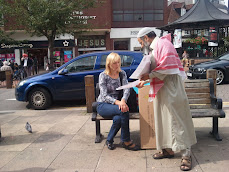

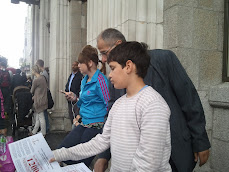





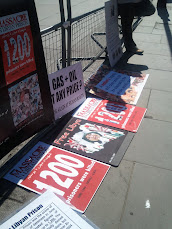
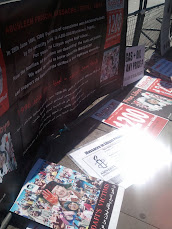















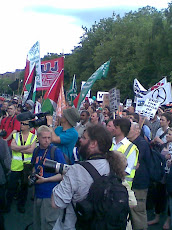












No comments:
Post a Comment